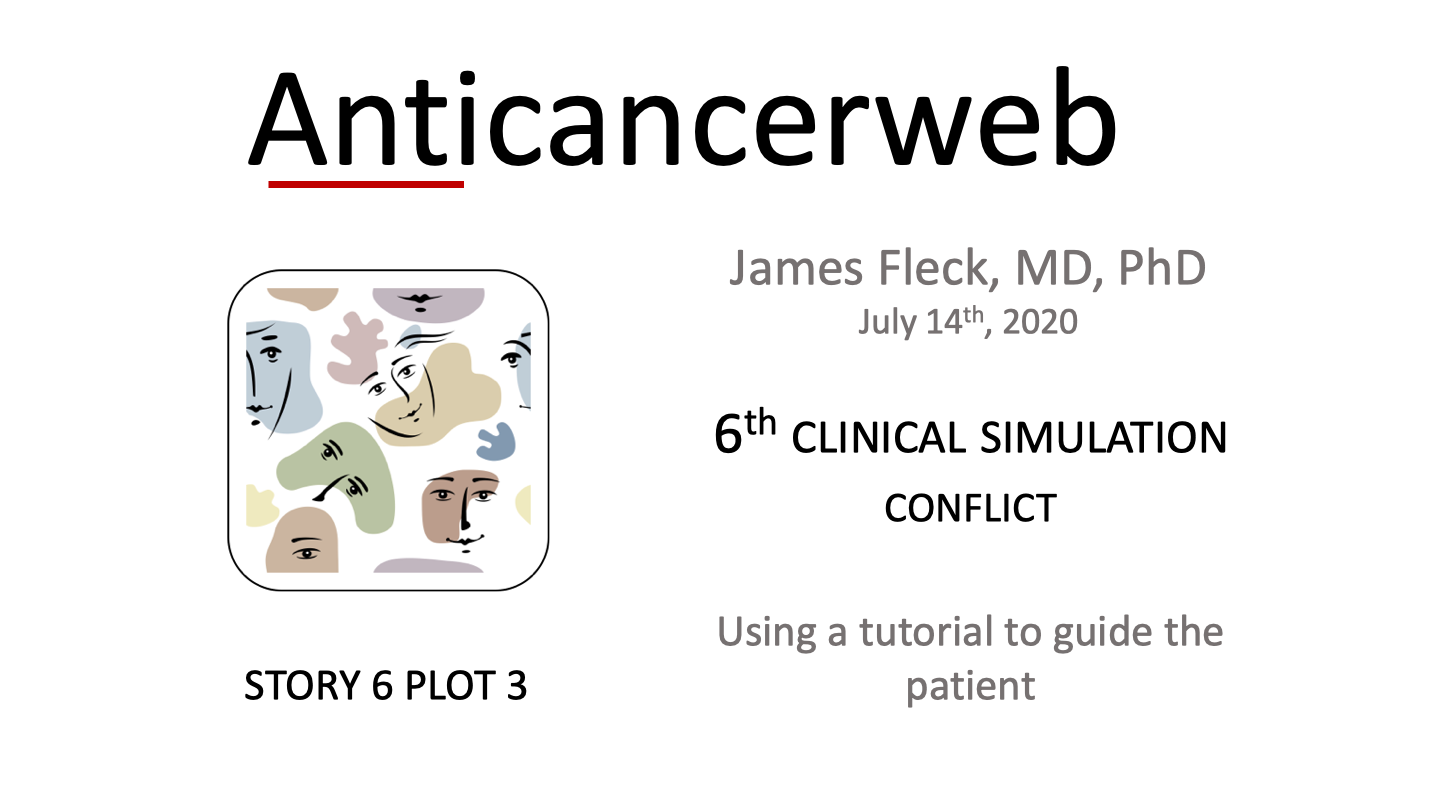
The Doctor as a Coach | Conflict
How doctors think
(Fictional narrative by the doctor)
James Fleck, MD, PhD: Anticancerweb 14 (07), 2020
I started creating a tutorial to provide the patient with an overview of the principles that guide good clinical practice. There were some limitations that could be minimized with qualified doctor-patient interaction. Twelve icons, providing visual identity, would be associated with doctor's reasoning steps. The strategy would involve an easy-to-use electronic platform. By clicking on the icon or touching the screen, the patient would be guided into the world of Medicine. I also decided to offer the tutorial in a printed format, making it easier for people unfamiliar with computers.
Alex's training program was created and would quickly extend to all patients who expressed inquisitive behavior. The figure below shows the 12 icons of the tutorial:
I decided to leave a printed tutorial in the office waiting room, next to some magazines. If the patient had spontaneously read the tutorial, the secretary would recommend that he talk to the doctor about the goals to be achieved. I soon realized that those patients clearly showed inquisitive behavior, actively seeking information. The behavior expressed in the waiting room would facilitate an andragogical approach.
When asked, I would explain the objectives of the tutorial. The program would make the patient better understand the decision-making process. Before agreeing to follow the tutorial, the patient must be committed to providing his critical opinion. I emphasized that all professionals involved in the project would be available to answer questions and that the patient could interrupt the tutorial at any time if he felt any emotional distress or loss of interest.
After years in clinical practice, I've found that patients contribute better to their own care when they understand how doctors think.
First, the patient would receive a printed material, which would also explain access to the electronic platform. At the patient's discretion, he can use any of the formats. In electronic format, the tutorial could be accessed from anywhere, providing a real-time interface. Critical comments from the patient and family would be obtained one week after the material was made available.
I had been influenced by Alex's initiative and put myself in a real challenge, producing his tutorial as quickly as possible. After writing the material, I hired a software team that created a responsive app in two weeks.
Alex used to have an excellent relationship with our healthcare team. Always expressing curiosity, he tried to understand all steps of his evaluation and treatment. He would be the first patient to face the tutorial. Although he could do it at home, he preferred to do it at the clinic, remaining close to our multidisciplinary team. Sue would follow him in all his initiatives.
Alex started the tutorial.
It opened a main menu containing three additional directions:
1. What is a tutorial?
2. How doctors work
3. Tutorial steps
When accessing each of the three items, Alex gradually understood the meaning of the tutorial.
By clicking "What is a tutorial?" the following information was obtained:
This tutorial is a cognitive resource used to inform patients about steps of their diagnosis and treatment. The tutorial helps in the doctor-patient relationship. It leads to a closer communication language, explaining procedures and promoting mutual understanding. The tutorial encourages the patient to have a proactive attitude, stimulating an active search for information and a better understanding of medical recommendations. The tutorial modulates the patient's behavior, avoiding his immobilization, passive acceptance of the disease and its limitations. When facing cancer, doctors and patients need to share goals and motivations. They should exchange information, improving diagnosis and treatment goals.
By clicking "How doctors work" the following information would appear:
Caring for cancer patients requires a methodological approach. Clinical evaluation begins with diagnostic hypotheses, followed by a careful critical analysis of tests and materials, assessment of the extent of the disease (staging) and an evidence-based treatment planning. These activities require multiple professional intervention, integration of the working group and consensual decision-making. Cancer diagnosis and treatment requires continuous updating. The physician should always offer the best treatment alternative available in the world, supported by good clinical practice. Special attention is given to the patient's emotional support and care for family dynamics.
By clicking on the different icons in the tutorial, patient would better understand how doctors work.
Alex and Sue decided to take the tutorial together, entering the broad universe of medical rational.
To be continued in PLOT 4 (climax) …
* Attention: The story 6 will be published sequentially from PLOT 1 to PLOT 6 and you will always see the most recent posting. To read Story 6 from the beginning, just click in the numbered links located at the bottom of the homepage.
© Copyright Anticancerweb 2020
James Fleck, MD, PhD: Full Professor of Clinical Oncology at the Federal University of Rio Grande do Sul, RS, Brazil 2020

Please login to write your comment.
If you do not have an account at Anticancerweb Portal, register now.